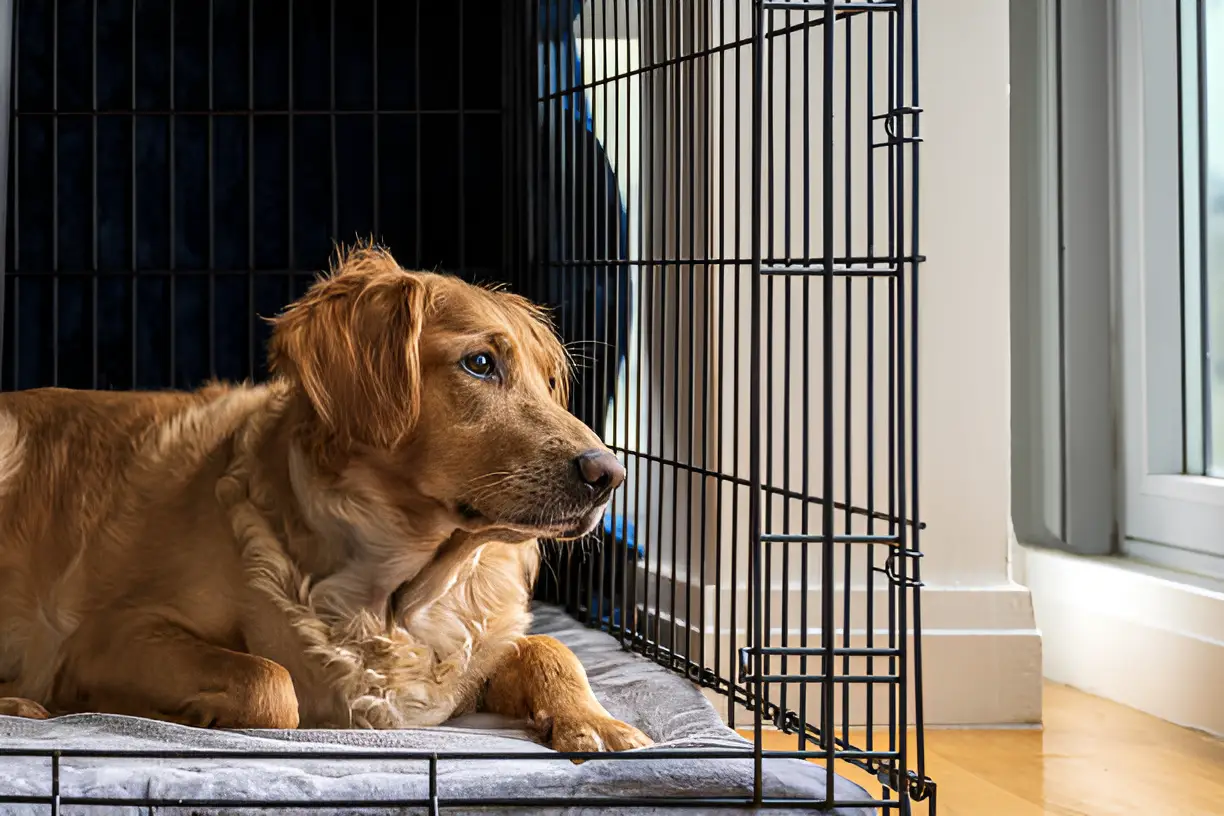Golden Retrievers can learn to enjoy being crated if the crate is introduced properly and used as a safe, comfortable space. Crate training is a valuable tool for dog owners, providing a safe and secure environment for their pets. For Golden Retrievers, a breed known for its friendly and sociable nature, crate training can be particularly beneficial when done correctly. This comprehensive guide will explore the benefits of crate training, how to introduce a crate to your Golden Retriever, and tips for making the crate a positive experience.
Understanding Crate Training
Crate training involves using a crate as a safe and comfortable space for your dog. When used appropriately, a crate can serve as a den-like environment where your Golden Retriever feels secure. Here are some key points about crate training:
- Safety and Security: A crate provides a safe space for your dog when you are not able to supervise them. It can prevent destructive behavior and keep your dog safe from household hazards.
- House Training: Crate training is an effective method for house training puppies. Dogs naturally avoid soiling their sleeping area, which helps teach them bladder and bowel control.
- Travel: A crate can make travel safer and less stressful for your dog. It provides a familiar environment that can help reduce anxiety during car rides or flights.
Benefits of Crate Training for Golden Retrievers
Golden Retrievers are known for their friendly and adaptable nature, making them good candidates for crate training. Here are some specific benefits for this breed:
1. Calm and Relaxed Environment: Golden Retrievers are social dogs that can sometimes become overstimulated. A crate provides a quiet space where they can retreat and relax.
2. Training and Discipline: Crate training helps establish a routine and structure, which is beneficial for Golden Retrievers. It teaches them boundaries and helps with overall obedience training.
3. Separation Anxiety: For Golden Retrievers that experience separation anxiety, a crate can provide a sense of security when left alone. It can help reduce anxiety and prevent destructive behavior.
Introducing the Crate to Your Golden Retriever
Introducing a crate to your Golden Retriever should be done gradually and positively. Here are some steps to ensure a smooth introduction:
1. Choose the Right Crate: Select a crate that is appropriately sized for your Golden Retriever. It should be large enough for them to stand, turn around, and lie down comfortably.
2. Create a Positive Association: Make the crate inviting by placing soft bedding, toys, and treats inside. Encourage your dog to explore the crate on their own terms.
3. Gradual Introduction: Start by leaving the crate door open and allowing your dog to enter and exit freely. Gradually increase the time they spend inside with the door closed, always rewarding them for calm behavior.
4. Consistency and Patience: Be consistent with crate training and patient with your dog. Avoid using the crate as a form of punishment, as this can create negative associations.
Making the Crate a Positive Experience
To ensure your Golden Retriever enjoys being crated, it’s important to make the crate a positive and comfortable space. Here are some tips:
1. Comfortable Bedding: Provide soft and comfortable bedding to make the crate cozy. Consider using a crate pad or blanket that your dog likes.
2. Toys and Chews: Place your dog’s favorite toys and chew items in the crate to keep them entertained and engaged.
3. Feeding in the Crate: Feed your dog their meals inside the crate to create a positive association with the space.
4. Calm Environment: Ensure the crate is placed in a quiet area of the house where your dog can rest undisturbed.
Addressing Common Concerns
While crate training can be beneficial, some owners may have concerns about the process. Here are some common concerns and how to address them:
1. Resistance to the Crate: If your Golden Retriever resists the crate, take a step back and reintroduce it slowly. Use positive reinforcement and make the crate as inviting as possible.
2. Excessive Barking or Whining: If your dog barks or whines in the crate, ensure they have had enough exercise and mental stimulation. Avoid letting them out while they are barking, as this can reinforce the behavior.
3. Time Limits: Avoid leaving your dog in the crate for extended periods. Puppies should not be crated for more than a few hours at a time, while adult dogs can handle longer periods if necessary.
Conclusion
In conclusion, Golden Retrievers can learn to enjoy being crated if the crate is introduced properly and used as a safe, comfortable space. Crate training offers numerous benefits, including safety, house training, and reducing separation anxiety. By following the tips provided and addressing common concerns, you can ensure that your Golden Retriever has a positive experience with crate training. Remember, patience and consistency are key to successful crate training.
The photo featured below the post headline is Credit: Christine McCann/istockphoto
I hope you find this post helpful and informative. If Yes’ feel free to share it with your friends!
Frequently Asked Questions
Do Golden Retrievers like to be crated?
Golden Retrievers can learn to enjoy being crated if the crate is introduced properly and used as a safe, comfortable space.
What are the benefits of crate training for Golden Retrievers?
Benefits include providing a calm environment, aiding in house training, establishing routine and discipline, and reducing separation anxiety.
How do I introduce a crate to my Golden Retriever?
Choose the right crate, create a positive association, introduce the crate gradually, and be consistent and patient.
How can I make the crate a positive experience for my Golden Retriever?
Provide comfortable bedding, place toys and chews in the crate, feed meals inside the crate, and ensure a calm environment.
What should I do if my Golden Retriever resists the crate?
Reintroduce the crate slowly, use positive reinforcement, and make the crate as inviting as possible.

